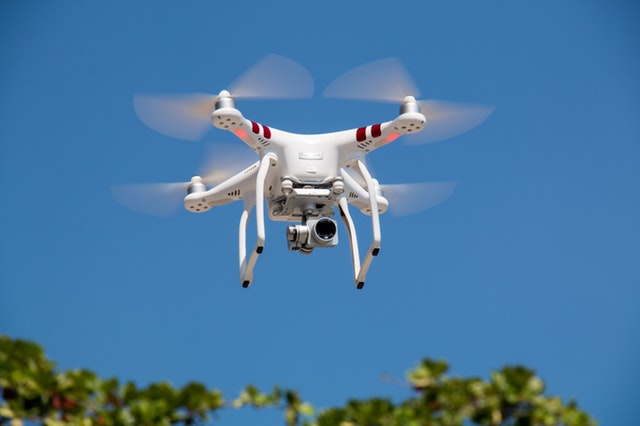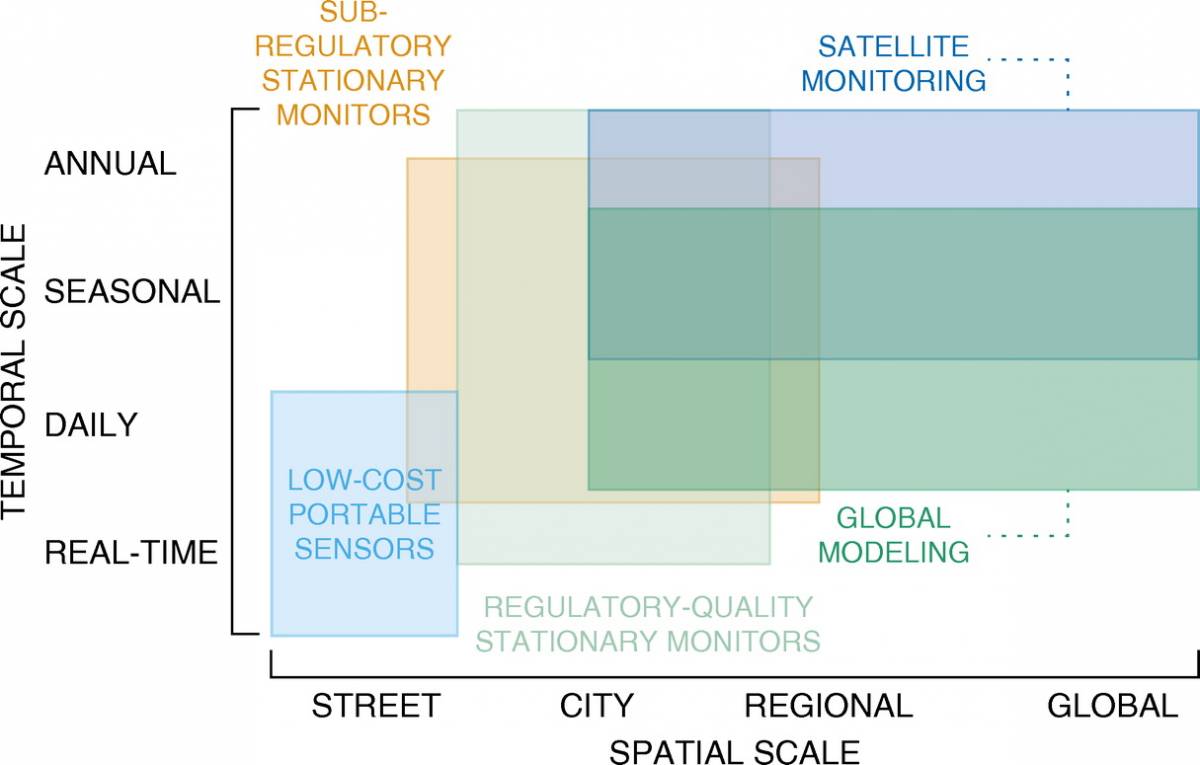An American Thoracic Society Workshop Report: Air Pollution Monitoring for Health Research and Patient Care
Workshop Report: Cromar, K.R., Duncan, B.N., Bartonova, A., Benedict, K., Brauer, M., Habre, R., Hagler, G.S.W., Haynes, J.A., Khan, Sean, Kilaru, V., Liu Y., Pawson, S., Peden, D.B., Quint, J.K., Rice, M.B., Sasser, E.N., Seto, E., Stone, S.L., Thurston, G.D., and Volkens, J. (2019), Air Pollution Monitoring for Health Research and Patient Care: An American Thoracic Society Workshop Report. Annals of the American Thoracic Society, 16, 10, https://doi.org/10.1513/AnnalsATS.201906-477ST.
Air quality data from satellites and low-cost sensor systems, along with output from air quality models, have the potential to augment high-quality, regulatory-grade data in countries with in situ monitoring networks and provide much needed air quality information in countries without them. Each of these technologies has strengths and limitations that need to be considered when integrating them to develop a robust and diverse global air quality monitoring network. To address these issues the American Thoracic Society, Environmental Protection Agency, National Aeronautics and Space Administration, and National Institute of Environmental Health Sciences convened a workshop in May 2017 to bring together global experts from across multiple disciplines and agencies to discuss current and near-term capabilities to monitor global air pollution. The participants focused on four topics: current and near-term capabilities in air pollution monitoring; data assimilation from multiple technology platforms; critical issues for air pollution monitoring in regions without a regulatory-quality stationary monitoring network; and risk communication and health messaging. Recommendations for research and improved utilization were identified during the workshop including a recognition that the integration of data across monitoring technology groups is critical in order to maximize the effectiveness (i.e., data accuracy, as well as spatial and temporal coverage) of these monitoring technologies. Taken together these recommendations will advance the development of a global air quality monitoring network that takes advantage of emerging technologies to ensure the availability of free, accessible and reliable air pollution data and forecasts to health professionals, as well, as to all global citizens.

Low-cost sensors, instruments on drones and satellites, and air quality models are becoming important sources of information that will complement traditional regulatory-grade surface monitors. (Image source: https://pixabay.com/en/camera-drone-hd-helicopter-2585494/)
Workshop Conclusions and Recommendations
Integrated Approach to Air Pollution Monitoring: A New Paradigm
Rather than viewing various monitoring technologies as competing for supremacy for use in health research, it is more constructive to realize that obtaining spatially resolved estimates of short-term and long-term pollution concentrations with global spatial coverage requires combining the strengths of multiple monitoring technologies. The contemporaneous improvements in data quality that have recently been achieved with low-cost monitors, satellites, and global models have enabled this new integrated paradigm in air pollution monitoring for health research.

Health Researchers Communicate with Satellite Agencies
The dramatic improvements in spatial resolution from satellites and, more important, the near-future availability of hourly air pollution measurements from upcoming satellite missions will open a new avenue of air pollution and health research, particularly in studies assessing the impact of short-term exposures. Continued interaction between health researchers and individuals affiliated with space agencies responsible for these satellite missions is essential to maximizing the relevance and suitability of collected air quality information.
Data Quality Standards for Low-Cost Sensors
The value of low-cost sensors as part of an integrated system of air quality monitoring will be greatly increased if data and metadata standards are established and adhered to in order to improve aggregation and use of collected data. Not to minimize the challenge in bringing an increasingly fractured sensor industry together around common standards, the highly similar technologies being used by a large number of different participants in the industry make this an obtainable and much desired goal.
Potential Power of Nonregulatory Data in LMIC
Locations currently without regulatory-quality monitors are encouraged to adopt and use air quality estimates from technologies such as satellites, nonregulatory monitors, and global models. Although these technologies lack the accuracy and precision of regulatory monitors typically needed as the basis of legal attainment of regulatory standards, they are currently sufficient for use in local health studies (multiple technologies), for monitoring trends in air quality (satellite), to identify of air pollution hot spots within a city (nonregulatory monitors), for daily risk communication (global models), and for assessing the effectiveness of air quality interventions (multiple technologies).
Integration of Global Air Quality Forecasts into Local Health Communication Efforts
Dramatic improvement in risk communication is now possible in areas without stationary monitoring networks because of the availability of global models that provide hourly estimates of air pollution at city-level spatial resolutions. These values can be forecast several days in advance but still need to be effectively harnessed by public health officials to incorporate these newly available estimates into successful health communication efforts.
Risk Communication for Very Short-Term Exposures
The availability of air quality information from a wide range of sources, with varying levels of accuracy and temporal resolution, strains risk communication efforts that have traditionally been based on regulatory or legal limits at time periods of 1, 8, or 24 hours. In addition to efforts to “translate” minute-to-minute exposures into existing risk communication constructs, additional exposure assessment and health research is needed to directly address risk communication questions regarding very short-term exposures to elevated pollution levels.
HAQAST Leads: Dr. Kevin Cromar (NYU), Dr. Bryan N. Duncan (Bryan.N.Duncan@nasa.gov; NASA)
Other HAQAST Participants: Dr. Yang Liu (Emory U.), Dr. Ted Russel (Georgia Tech)
Other Participants: see workshop report

